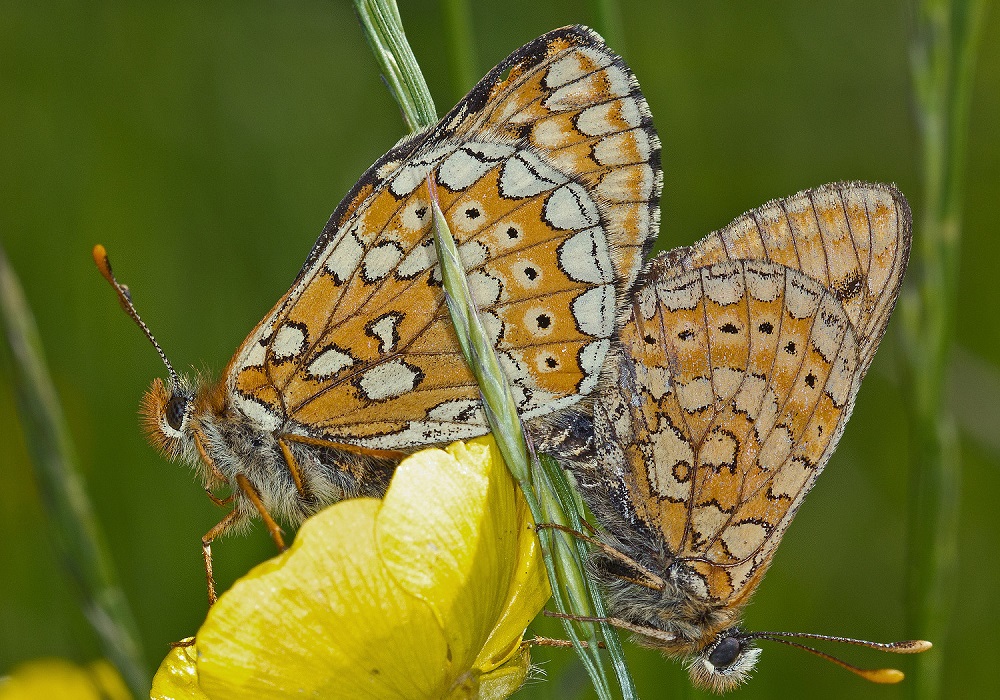Research reveals ‘promising numbers’ of one of UK’s rarest butterflies in Ceredigion

A new survey has found that the Marsh Fritillary, one of the UK’s rarest butterflies, is thriving in Ceredigion.
The Marsh Fritillary was previously widespread throughout the UK but has experienced a 79% decline since the mid-1970s, as well as a 60% drop in abundance throughout Wales.
Loss and degradation of the marshy grasslands, also known as rhos pasture, that support the butterfly is seen as the main reason for the decline, which has left west and south Wales as one of the few remaining strongholds for the species in the UK.
The survey counted the number of silk webs spun by caterpillars hatched from Marsh Fritillary Butterfly eggs. Silk webs were found in all but one of the 12 sites included in the survey. A total of 700 webs were found across the survey sites.
These larval webs are one of the best indicators of Marsh Fritillary populations, as they are easier to see than the butterflies themselves, as they can be seen in all weathers.
The survey was carried out by Natural Resources Wales’ Environment Team in Ceredigion, along with colleagues from Butterfly Conservation, The Wildlife Trust of South and West Wales and the county butterfly recorder, Paul Taylor.
Key area
Dr Carol Fielding, Team Leader of NRW’s Ceredigion Environment Team said: “The survey results show promising numbers and suggest that Ceredigion remains a key area for this rare butterfly.
“Along with the Wildlife Trust and Butterfly Conservation, our team has worked closely with the owners of the rhos pasture habitats used by the butterfly to use the right land management such as ensuring suitable grazing.
“This land management supports and enhances the resilience of our ecosystems and increases biodiversity. We hope to survey adult butterflies in May and June next year, after the caterpillars have hatched, and to carry on monitoring annually.”
Marsh Fritillary butterflies thrive in rhos pastures; species-rich marshy grassland which are found in lowland areas, including Ceredigion, Carmarthenshire and the south Wales coalfield.
The adult butterflies fly around rhos pastures between May and July and lay eggs underneath the leaves of the Devil’s Bit Scabious plant, which is also the species’ foodplant.
These eggs hatch after a few weeks into small caterpillars, which work together to spin a silk web within the leaves of the plant. Each web protects up to 75 caterpillars.
Support our Nation today
For the price of a cup of coffee a month you can help us create an independent, not-for-profit, national news service for the people of Wales, by the people of Wales.






